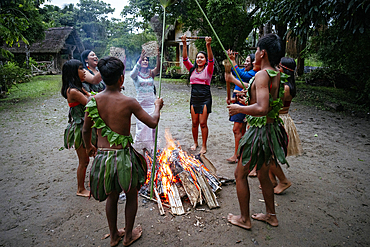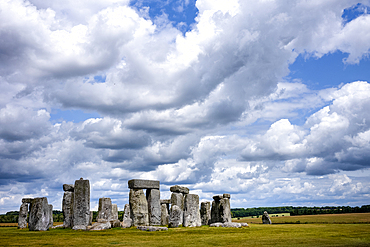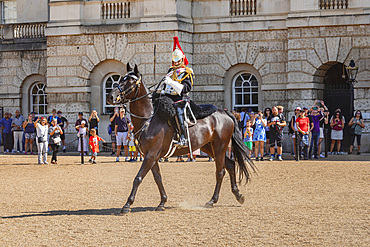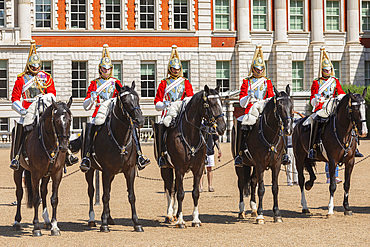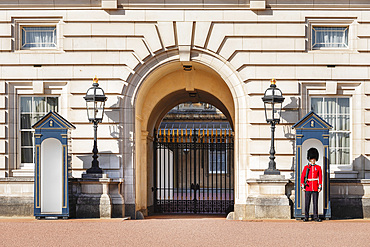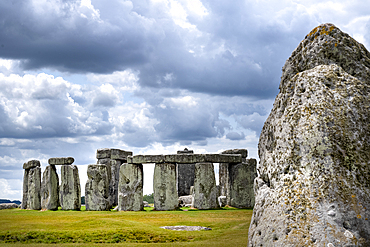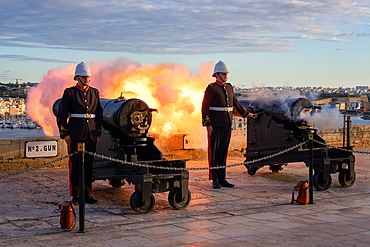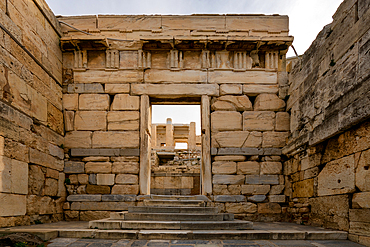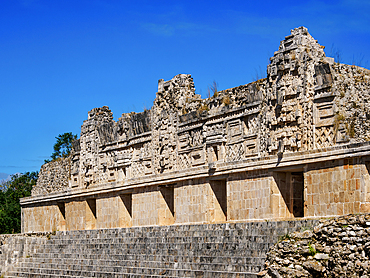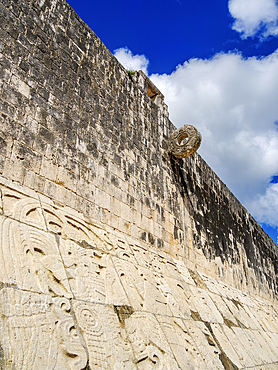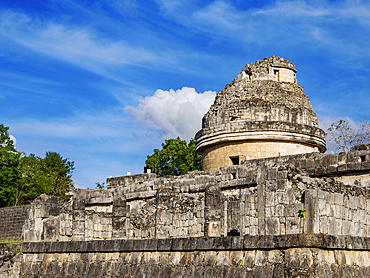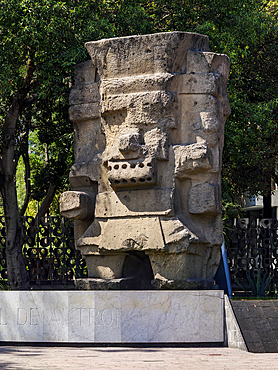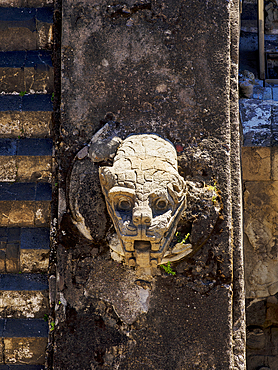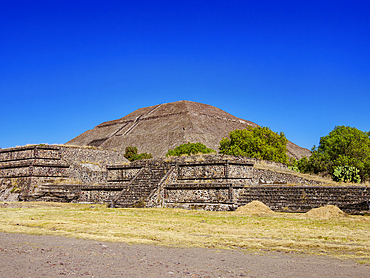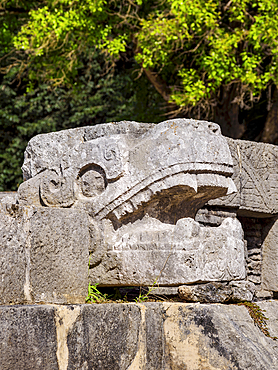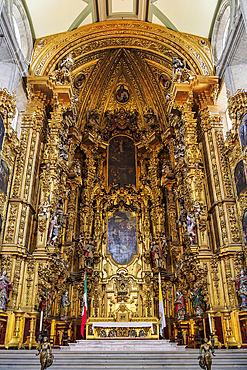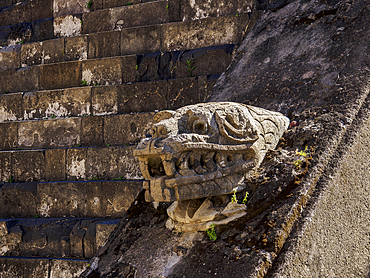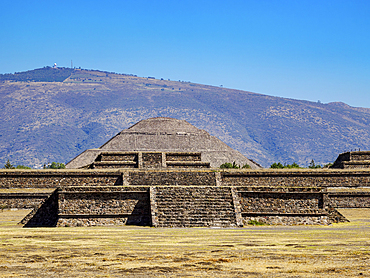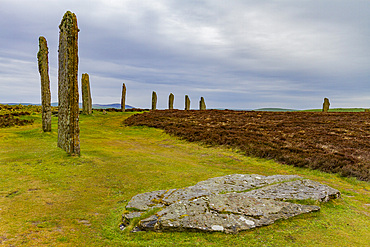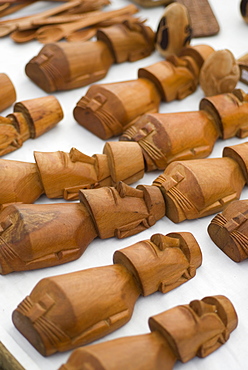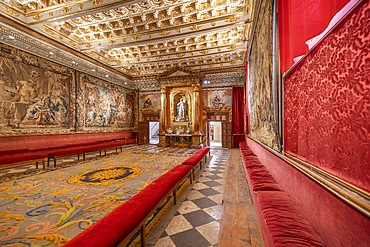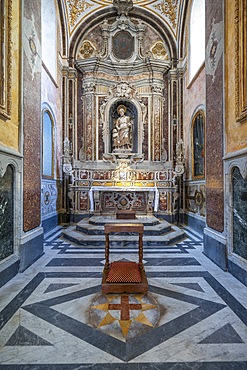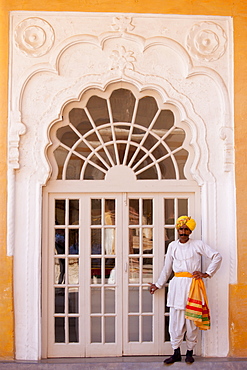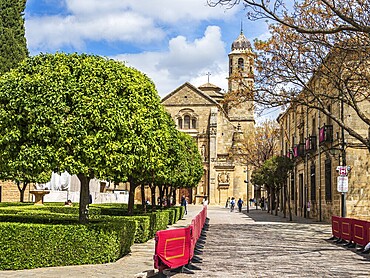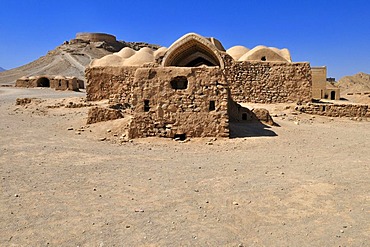Results
83 results found
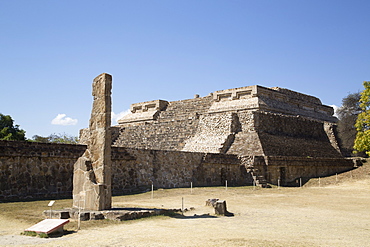
Stela 18 dating from 100 BC to 300 AD in foreground, with Building Group IV, Ceremonial Complex in the background, Monte Alban, UNESCO World Heritage Site, Oaxaca, Mexico, North America
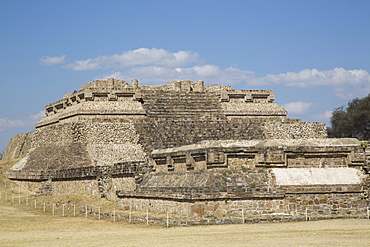
Building Group IV, Ceremonial Complex, Monte Alban, UNESCO World Heritage Site, Oaxaca, Mexico, North America
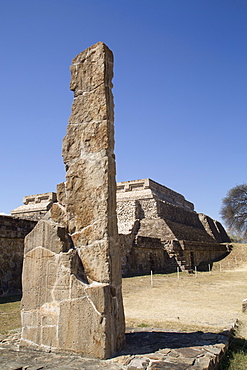
Stela 18 dating from 100 BC to 300 AD in foreground, with Building Group IV, Ceremonial Complex in the background, Monte Alban, UNESCO World Heritage Site, Oaxaca, Mexico, North America
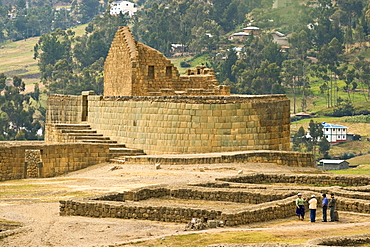
Ceremonial Plaza and the unique elliptical structure of the Temple of the Sun, which exhibits classic Inca mortar-less stonework, at Ecuador's most important Inca site, Ingapirca, Canar Province, Southern Highlands, Ecuador, South America
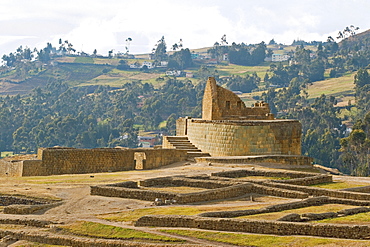
Ceremonial Plaza and the unique elliptical structure of the Temple of the Sun, which exhibits classic Inca mortar-less stonework, at Ecuador's most important Inca site, Ingapirca, Canar Province, Southern Highlands, Ecuador, South America
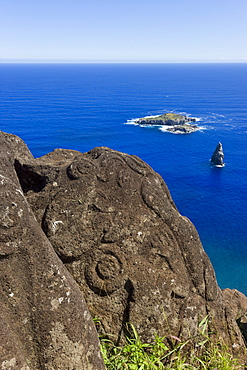
Petroglyphs at the archeological site of Orongo Ceremonial village high on the crater rim of Ranu Kau, Rapa Nui (Easter Island), UNESCO World Heritage Site, Chile, South America
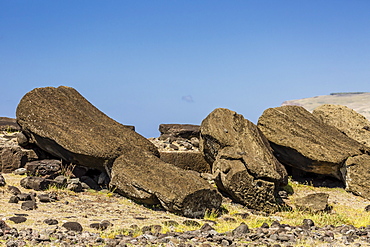
Fallen moai at Ura Uranga Te Mahina ceremonial site on Easter Island (Isla de Pascua) (Rapa Nui), UNESCO World Heritage Site, Chile, South America
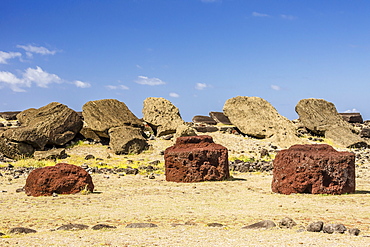
Fallen moai and red scoria topknots at Ura Uranga Te Mahina ceremonial site on Easter Island (Isla de Pascua) (Rapa Nui), UNESCO World Heritage Site, Chile, South America
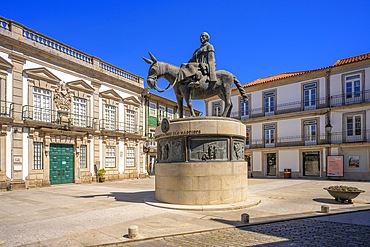
Sculpture of Friar Bartholomew of the Martyrs, Largo de Sao Domingos, Viana do Castelo, Minho-Lima, Portugal
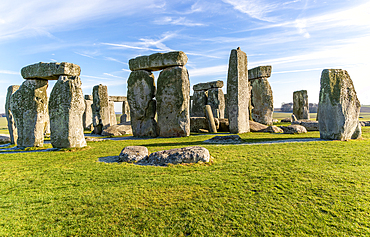
Standing stones of Neolithic henge, Stonehenge, UNESCO World Heritage Site, Wiltshire, England, United Kingdom, Europe
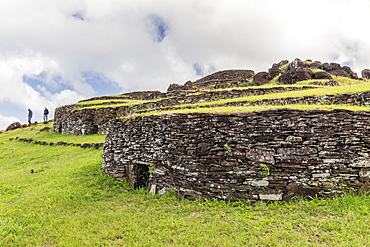
One of 53 stone masonry houses at Orongo, a stone village and Birdman ceremonial site at the southwestern tip of Easter Island, Rapa Nui National Park, UNESCO World Heritage Site, Easter Island (Isla de Pascua), Chile, South America
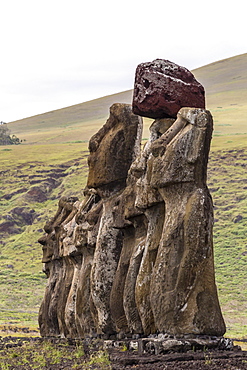
15 moai restored ceremonial site of Ahu Tongariki, Rapa Nui National Park, UNESCO World Heritage Site, Easter Island (Isla de Pascua), Chile, South America
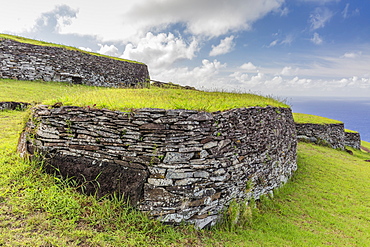
One of 53 stone masonry houses at Orongo, a stone village and Birdman ceremonial site at the southwestern tip of Easter Island, Rapa Nui National Park, UNESCO World Heritage Site, Easter Island (Isla de Pascua), Chile, South America
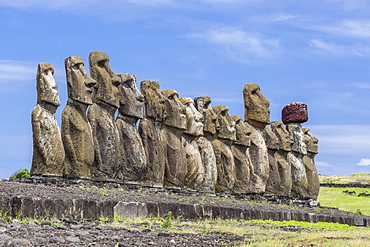
15 moai restored ceremonial site of Ahu Tongariki, Rapa Nui National Park, UNESCO World Heritage Site, Easter Island (Isla de Pascua), Chile, South America
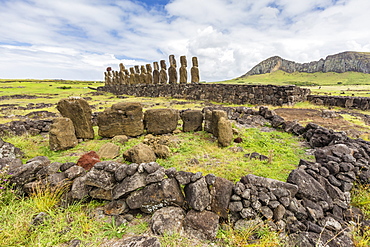
Partial moai heads in a circle at the 15 moai restored ceremonial site of Ahu Tongariki, Rapa Nui National Park, UNESCO World Heritage Site, Easter Island (Isla de Pascua), Chile, South America
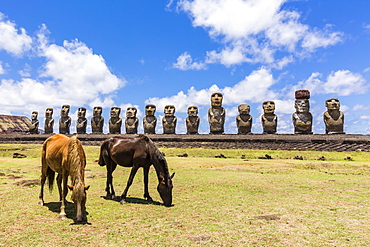
Horses grazing at the 15 moai restored ceremonial site of Ahu Tongariki on Easter Island (Isla de Pascua) (Rapa Nui), UNESCO World Heritage Site, Chile, South America
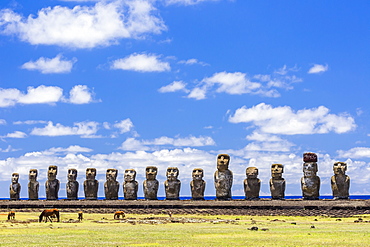
Horses grazing at the 15 moai restored ceremonial site of Ahu Tongariki on Easter Island (Isla de Pascua) (Rapa Nui), UNESCO World Heritage Site, Chile, South America
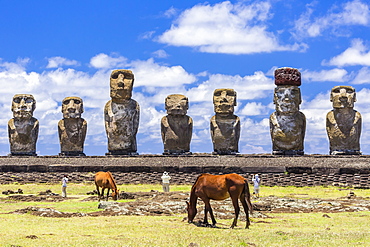
Horses grazing at the 15 moai restored ceremonial site of Ahu Tongariki on Easter Island (Isla de Pascua) (Rapa Nui), UNESCO World Heritage Site, Chile, South America
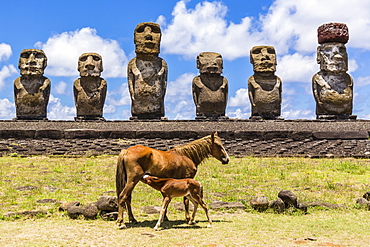
Mare nursing foal at the 15 moai restored ceremonial site of Ahu Tongariki on Easter Island (Isla de Pascua) (Rapa Nui), UNESCO World Heritage Site, Chile, South America
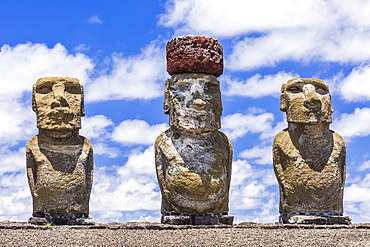
Details of moai at the 15 moai restored ceremonial site of Ahu Tongariki on Easter Island (Isla de Pascua) (Rapa Nui), UNESCO World Heritage Site, Chile, South America
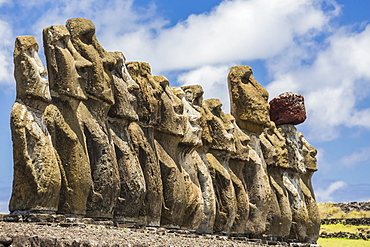
Fifteen moai at the restored ceremonial site of Ahu Tongariki on Easter Island (Isla de Pascua) (Rapa Nui), UNESCO World Heritage Site, Chile, South America
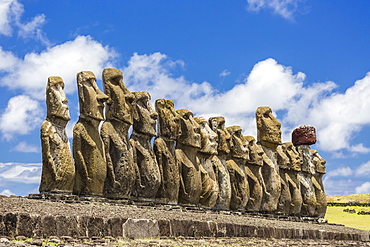
Fifteen moai at the restored ceremonial site of Ahu Tongariki on Easter Island (Isla de Pascua) (Rapa Nui), UNESCO World Heritage Site, Chile, South America
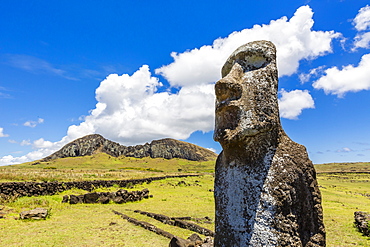
Single moai statue guards the entrance at the 15 moai restored ceremonial site of Ahu Tongariki on Easter Island (Isla de Pascua) (Rapa Nui), UNESCO World Heritage Site, Chile, South America
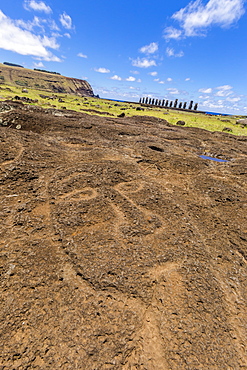
Petroglyphs carved in the lava at the 15 moai restored ceremonial site of Ahu Tongariki on Easter Island (Isla de Pascua) (Rapa Nui), UNESCO World Heritage Site, Chile, South America
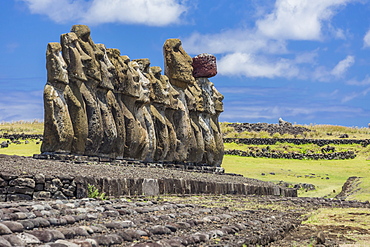
Fifteen moai at the restored ceremonial site of Ahu Tongariki on Easter Island (Isla de Pascua) (Rapa Nui), UNESCO World Heritage Site, Chile, South America
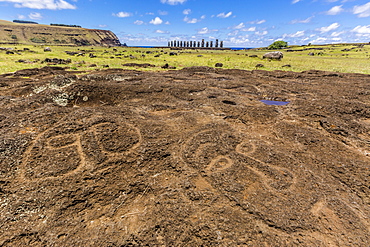
Petroglyphs carved in the lava at the 15 moai restored ceremonial site of Ahu Tongariki on Easter Island (Isla de Pascua) (Rapa Nui), UNESCO World Heritage Site, Chile, South America
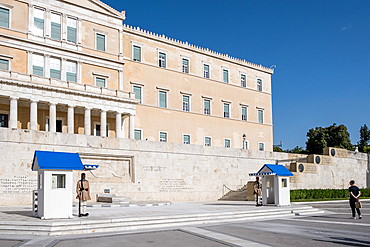
View of the Greek Presidential Guard (Evzones) in traditional uniform outside the Presidential Mansion, Athens, Greece
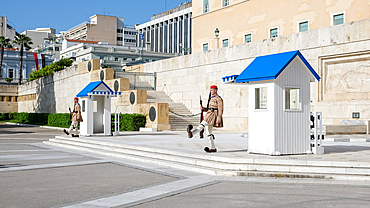
View of the Greek Presidential Guard (Evzones) in traditional uniform outside the Presidential Mansion, Athens, Greece
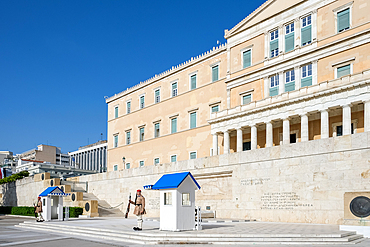
View of the Greek Presidential Guard (Evzones) in traditional uniform outside the Presidential Mansion, Athens, Greece
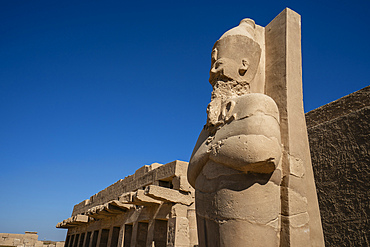
Temple of Amun, Temple complex of Karnak, UNESCO World Heritage Site, Thebes, Egypt, North Africa, Africa
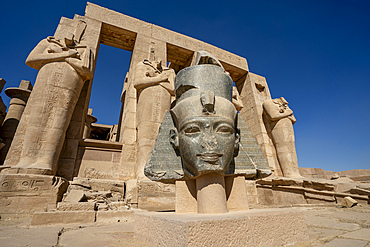
The Temple of Ramesses II (The Ramesseum), UNESCO World Heritage Site, Thebes, Luxor, Egypt, North Africa, Africa
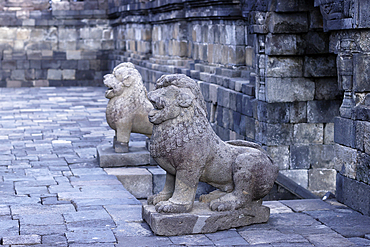
Lion statue, Borobudur, 9th-century Mahayana Buddhist temple, UNESCO World Heritage, Java, Indonesia
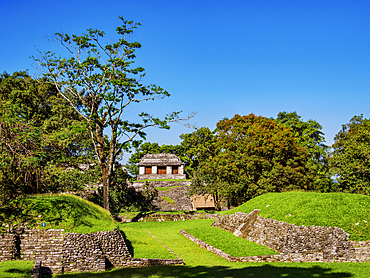
View over the Ball Court towards the North Group, Palenque Archaeological Site, Palenque, Chiapas State, Mexico
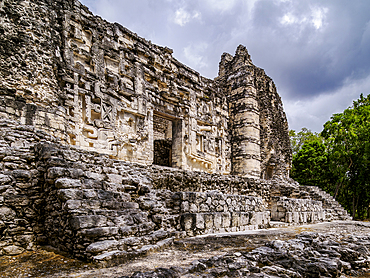
Structure II with menacing jaws of the serpent god Itzamna entrance, Hormiguero Archaeological Site, Campeche State, Mexico
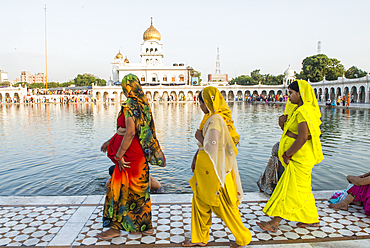
Followers by the 'Sarovar' pond whose water is considered holy, inside Gurudwara Bangla Sahib, the most prominent Sikh gurdwara, or Sikh house of worship, in Delhi, India, Asia
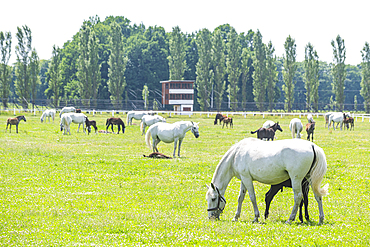
Landscape for Breeding and Training of Ceremonial Carriage Horses at Kladruby nad Labem, UNESCO World Heritage Site, Pardubice Region, Czech Republic, Europe

Tomb of Nefertari, Valley of the Queens, UNESCO World Heritage Site, Thebes, Egypt, North Africa, Africa
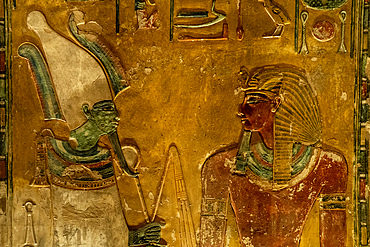
Tomb of Seti I, Valley of the Kings, UNESCO World Heritage Site, Thebes, Luxor, Egypt, North Africa, Africa

The Kiva of the ancient Tusayan Ruins at Grand Canyon South Rim, UNESCO World Heritage Site, Arizona, United States of America, North America
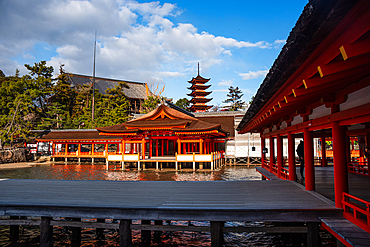
Red Pagoda at Itsukushima Shinto Shrine on Miyajima Island, UNESCO World Heritage Site, famous for floating torii Otori, HiroshimaPrefecture, Honshu, Japan, Asia
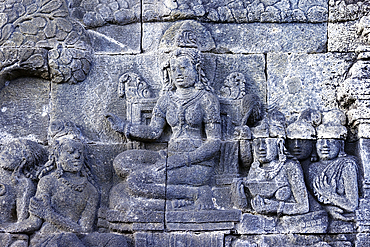
Bas-relief of life of Buddha, Borobudur, 9th-century Mahayana Buddhist temple, UNESCO, Java, Indonesia
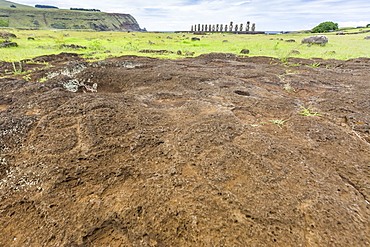
Petroglyphs carved in the lava at the 15 moai restored ceremonial site of Ahu Tongariki, Rapa Nui National Park, UNESCO World Heritage Site, Easter Island (Isla de Pascua), Chile, South America
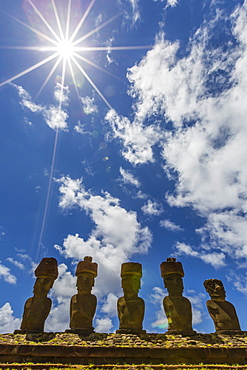
Moai with scoria red topknots at the restored ceremonial site of Ahu Nau Nau on Easter Island (Isla de Pascua) (Rapa Nui), UNESCO World Heritage Site, Chile, South America
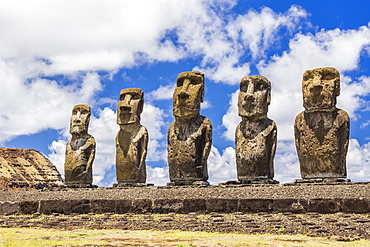
Details of moai at the 15 moai restored ceremonial site of Ahu Tongariki on Easter Island (Isla de Pascua) (Rapa Nui), UNESCO World Heritage Site, Chile, South America
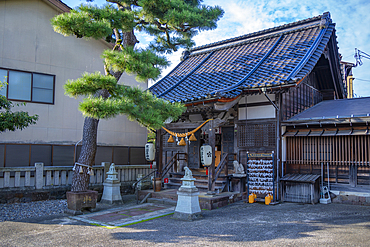
View of Higashiyama Sugawara Shrine in the Higashi Chaya District, Kanazawa City, Ishikawa Prefecture, Honshu, Japan

Landscape for Breeding and Training of Ceremonial Carriage Horses at Kladruby nad Labem, UNESCO World Heritage Site, Pardubice Region, Czech Republic, Europe
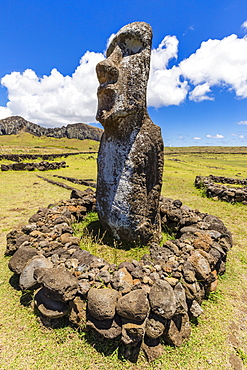
Single moai statue guards the entrance at the 15 moai restored ceremonial site of Ahu Tongariki on Easter Island (Isla de Pascua) (Rapa Nui), UNESCO World Heritage Site, Chile, South America
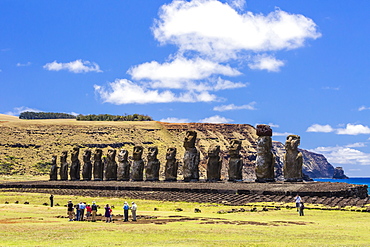
Tourists at the 15 moai restored ceremonial site of Ahu Tongariki on Easter Island (Isla de Pascua) (Rapa Nui), UNESCO World Heritage Site, Chile, South America
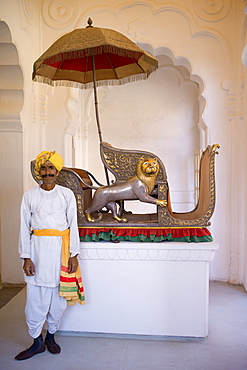
Hindu ceremonial guard with elephant howdah 20th Century exhibit at Mehrangarh Fort at Jodhpur, Rajasthan, Northern India
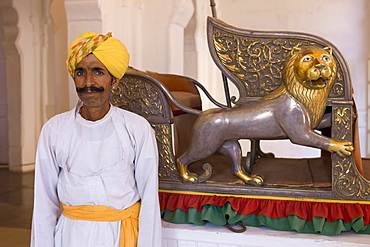
Hindu ceremonial guard with elephant howdah 20th Century exhibit at Mehrangarh Fort at Jodhpur, Rajasthan, Northern India
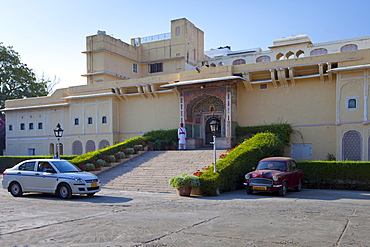
Ceremonial Guard at Samode Haveli luxury hotel, former merchant's house, in Jaipur, Rajasthan, Northern India
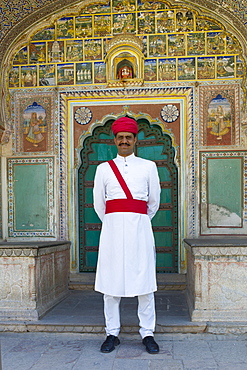
Ceremonial Guard at Samode Haveli luxury hotel, former merchant's house, in Jaipur, Rajasthan, Northern India
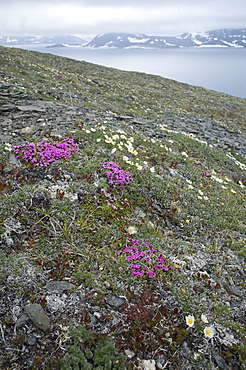
Whalebone Alley grand vista, high altitude flora, Itygran Island (Bering Sea) Russia, Asia. MORE INFO: Whale Bone Alley was discovered by Soviet archaeologists in 1976, but has remained untouched since and little is known of this place. There is a long double line of bowhead whale bones -- jaws and ribs -- running parallel along the shore for hundreds of yards. Many of the bones, especially the enormous jaw bones, are still standing, propped up by lichen-covered rocks. The location is thought to have been used in about 1300 as a ceremonial site, for a men's secret society or feasting site.
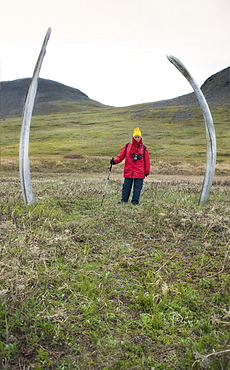
Whalebone Alley, female tourist standing between bow head whale rib bones, Itygran Island (Bering Sea) Russia, Asia. MORE INFO: Whale Bone Alley was discovered by Soviet archaeologists in 1976, but has remained untouched since and little is known of this place. There is a long double line of bowhead whale bones -- jaws and ribs -- running parallel along the shore for hundreds of yards. Many of the bones, especially the enormous jaw bones, are still standing, propped up by lichen-covered rocks. The location is thought to have been used in about 1300 as a ceremonial site, for a men's secret society or feasting site.
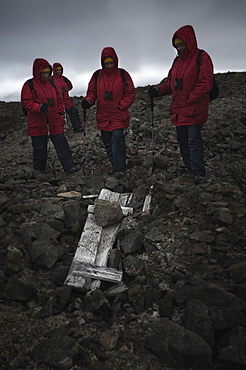
Whalebone Alley, female tourist standing around still intact extremly old inuit elder grave, skeleton still present. Itygran Island (Bering Sea) Russia, Asia. MORE INFO: Whale Bone Alley was discovered by Soviet archaeologists in 1976, but has remained untouched since and little is known of this place. There is a long double line of bowhead whale bones -- jaws and ribs -- running parallel along the shore for hundreds of yards. Many of the bones, especially the enormous jaw bones, are still standing, propped up by lichen-covered rocks. The location is thought to have been used in about 1300 as a ceremonial site, for a men's secret society or feasting site.
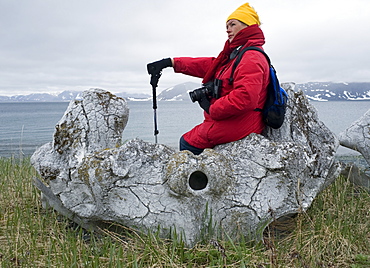
Whalebone Alley, female tourist sitting on bowhead whale bone, Itygran Island (Bering Sea) Russia, Asia. MORE INFO: Whale Bone Alley was discovered by Soviet archaeologists in 1976, but has remained untouched since and little is known of this place. There is a long double line of bowhead whale bones -- jaws and ribs -- running parallel along the shore for hundreds of yards. Many of the bones, especially the enormous jaw bones, are still standing, propped up by lichen-covered rocks. The location is thought to have been used in about 1300 as a ceremonial site, for a men's secret society or feasting site.
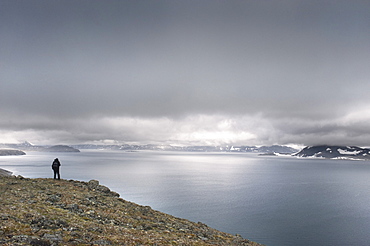
Whalebone Alley grand vista, female tourist standing on cliff face, Itygran Island (Bering Sea) Russia, Asia. MORE INFO: Whale Bone Alley was discovered by Soviet archaeologists in 1976, but has remained untouched since and little is known of this place. There is a long double line of bowhead whale bones -- jaws and ribs -- running parallel along the shore for hundreds of yards. Many of the bones, especially the enormous jaw bones, are still standing, propped up by lichen-covered rocks. The location is thought to have been used in about 1300 as a ceremonial site, for a men's secret society or feasting site.
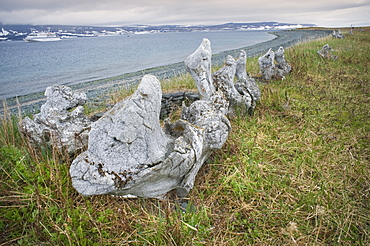
Whalebone Alley, Bowhead whale bones, Itygran Island (Bering Sea) Russia, Asia. MORE INFO: Whale Bone Alley was discovered by Soviet archaeologists in 1976, but has remained untouched since and little is known of this place. There is a long double line of bowhead whale bones -- jaws and ribs -- running parallel along the shore for hundreds of yards. Many of the bones, especially the enormous jaw bones, are still standing, propped up by lichen-covered rocks. The location is thought to have been used in about 1300 as a ceremonial site, for a men's secret society or feasting site.
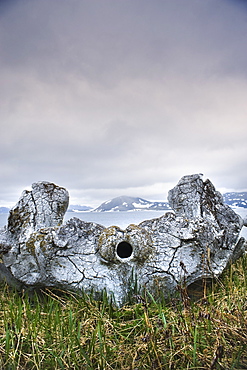
Whalebone Alley, Bowhead whale bone, Itygran Island (Bering Sea) Russia, Asia. MORE INFO: Whale Bone Alley was discovered by Soviet archaeologists in 1976, but has remained untouched since and little is known of this place. There is a long double line of bowhead whale bones -- jaws and ribs -- running parallel along the shore for hundreds of yards. Many of the bones, especially the enormous jaw bones, are still standing, propped up by lichen-covered rocks. The location is thought to have been used in about 1300 as a ceremonial site, for a men's secret society or feasting site.

Whalebone Alley grand vista, female tourist standing on cliff face, Itygran Island (Bering Sea) Russia, Asia. MORE INFO: Whale Bone Alley was discovered by Soviet archaeologists in 1976, but has remained untouched since and little is known of this place. There is a long double line of bowhead whale bones -- jaws and ribs -- running parallel along the shore for hundreds of yards. Many of the bones, especially the enormous jaw bones, are still standing, propped up by lichen-covered rocks. The location is thought to have been used in about 1300 as a ceremonial site, for a men's secret society or feasting site.
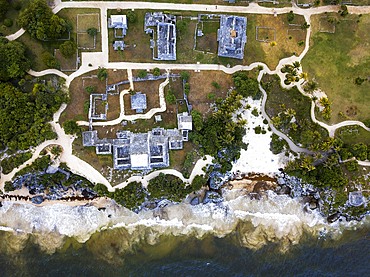
Aerial views of El Castillo and the Ruins of the Mayan temple grounds at Tulum, Quintana Roo, Yucatan, Mexico. Tulum is the site of a pre-Columbian Mayan walled city which served as a major port for Coba, in the Mexican state of Quintana Roo. The ruins are situated on 12 meter 39 ft tall cliffs along the east coast of the Yucatán Peninsula on the Caribbean Sea in the state of Quintana Roo, Mexico. Tulum was one of the last cities built and inhabited by the Maya; it was at its height between the 13th and 15th centuries and managed to survive about 70 years after the Spanish began occupying Mexico. Old World diseases brought by the Spanish settlers appear to have resulted in very high fatalities, disrupting the society, and eventually causing the city to be abandoned.
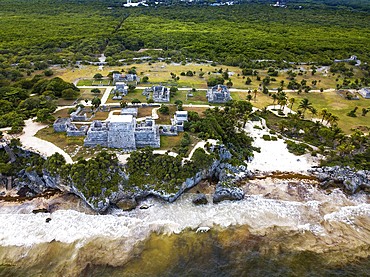
Aerial views of El Castillo and the Ruins of the Mayan temple grounds at Tulum, Quintana Roo, Yucatan, Mexico. Tulum is the site of a pre-Columbian Mayan walled city which served as a major port for Coba, in the Mexican state of Quintana Roo. The ruins are situated on 12 meter 39 ft tall cliffs along the east coast of the Yucatán Peninsula on the Caribbean Sea in the state of Quintana Roo, Mexico. Tulum was one of the last cities built and inhabited by the Maya; it was at its height between the 13th and 15th centuries and managed to survive about 70 years after the Spanish began occupying Mexico. Old World diseases brought by the Spanish settlers appear to have resulted in very high fatalities, disrupting the society, and eventually causing the city to be abandoned.
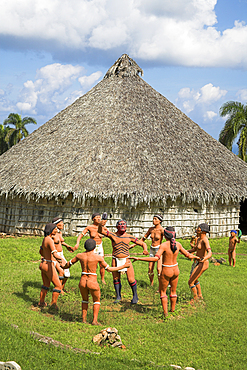
Model of Indians in reproduction Taino Indian village, Chorro de Maita, Banes, near Guardalavaca, Holguin Province, Cuba
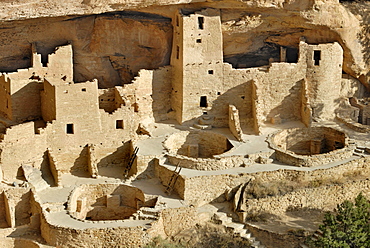
Historic habitation and cult site of the Ancestral Puebloans, Cliff Palace, partial view with 3 round ceremonial rooms, so-called called Kivas, about 1200 AD, Mesa Verde National Park, Colorado, USA
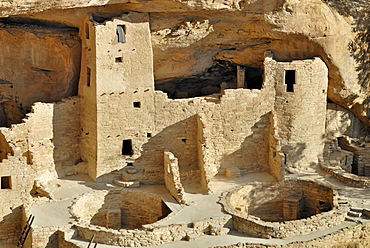
Historic habitation and cult site of the Ancestral Puebloans, Cliff Palace, partial view with 2 round ceremonial rooms, so-called called Kivas, about 1200 AD, Mesa Verde National Park, Colorado, USA
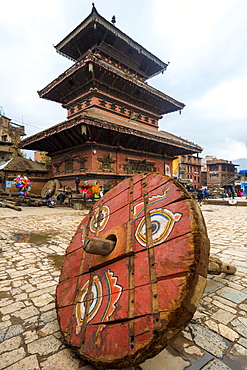
Wheel of a ceremonial chariot for the Bisket Jatra Festival in front of Bhairabnath Temple, Taumadhi Tole square, Bhaktapur, Nepal, Asia
